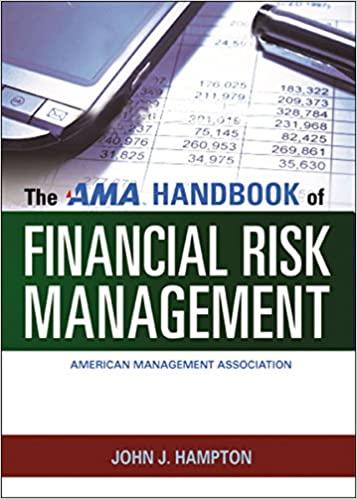Question
Question 1: At the end of three years, how much is an initial deposit of $100 worth, assuming a compound annual interest rate of (i)
Question 1: At the end of three years, how much is an initial deposit of $100 worth, assuming a compound annual interest rate of (i) 50 percent? (ii) 25 percent? (iii) 1 percent?
Question 2:
At the end of 7 years, how much is an initial $500 deposit followed by five year- end, annual $100 payments worth, assuming a compound annual interest rate of
(i) 10 percent? (ii) 5 percent? (iii) 0 percent?
Question 3: At the end of 9 years, how much is an initial $500 deposit followed by annual payments of $100, paid at the beginning of the year for next 6 years' worth, assuming a compound annual interest rate of (i) 20 percent? (ii) 25 percent? (iii) 10 percent?
Question 4: At the end of 4 years, how much is an initial $100 deposit worth, assuming a quarterly compounded annual interest rate of (i) 50 percent? (ii) 20 percent?
Question 5: At the end of 11 years, how much is a $1000 initial deposit worth, assuming an annual interest rate of 10 percent compounded (i) annually? (ii) semiannually? (iii) quarterly? (iv) continuously?
Question 6: $1000 at the end of three years is worth how much today, assuming a discount rate of (i) 500 percent? (ii) 25 percent? (iii) 10 percent?
Question 7: What is the aggregate present value of $5000 received at the end of each of the next three years, assuming a discount rate of (i) 14 percent? (ii) 35 percent?
Question 8: $1000 is received at the end of one year, $1500 at the end of two years, and $1,0000 at the end of three years. What is the aggregate present value of the receipts, assuming a discount rate of (i) 4 percent? (ii) 25 percent?
Question 9: $1,0000 is to be received at the end of one year, $1500 at the end of two years, and $1000 at the end of three years. What is the aggregate present value of these receipts assuming a discount rate of
i. 4 percent? ii. 25 percent?
Question 10: Joe Hernandez has inherited $35,000 and wishes to purchase an annuity that will provide him with a steady income over the next 15 years. He has heard that the local savings and loan association is currently paying 6 percent compound interest on an annual basis. If he were to deposit his funds, what year-end equal-dollar amount (to the nearest dollar) would he be able to withdraw annually such that he would have a zero balance after his last withdrawal 15 years from now? Also make the amortization table.
Question 11: You need to have $60,000 at the end of 10 years. To accumulate this sum, you have decided to save a certain amount at the end of each of the next 10 years and deposit it in the bank. The bank pays 8 percent interest compounded annually for long-term deposits. How much will you have to save each year (to the nearest dollar)?
Question 12: Same as last question, except that you deposit a certain amount at the beginning of each of the next 10 years. Now, how much will you have to save each year (to the nearest dollar)?
Question 13: Vernal Equinox wishes to borrow $100,000 for three years. A group of individuals agrees to lend him this amount if he contracts to pay them $160,000 at the end of the three years. What is the implicit compound annual interest rate implied by this contract (to the nearest whole percent)?
Step by Step Solution
There are 3 Steps involved in it
Step: 1

Get Instant Access to Expert-Tailored Solutions
See step-by-step solutions with expert insights and AI powered tools for academic success
Step: 2

Step: 3

Ace Your Homework with AI
Get the answers you need in no time with our AI-driven, step-by-step assistance
Get Started


